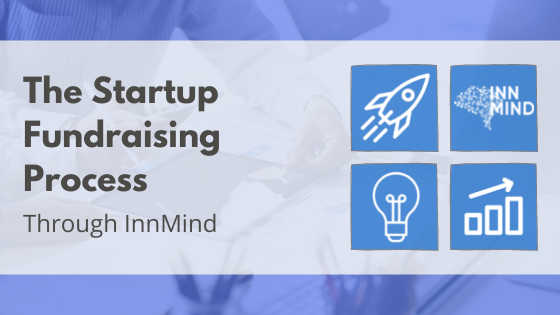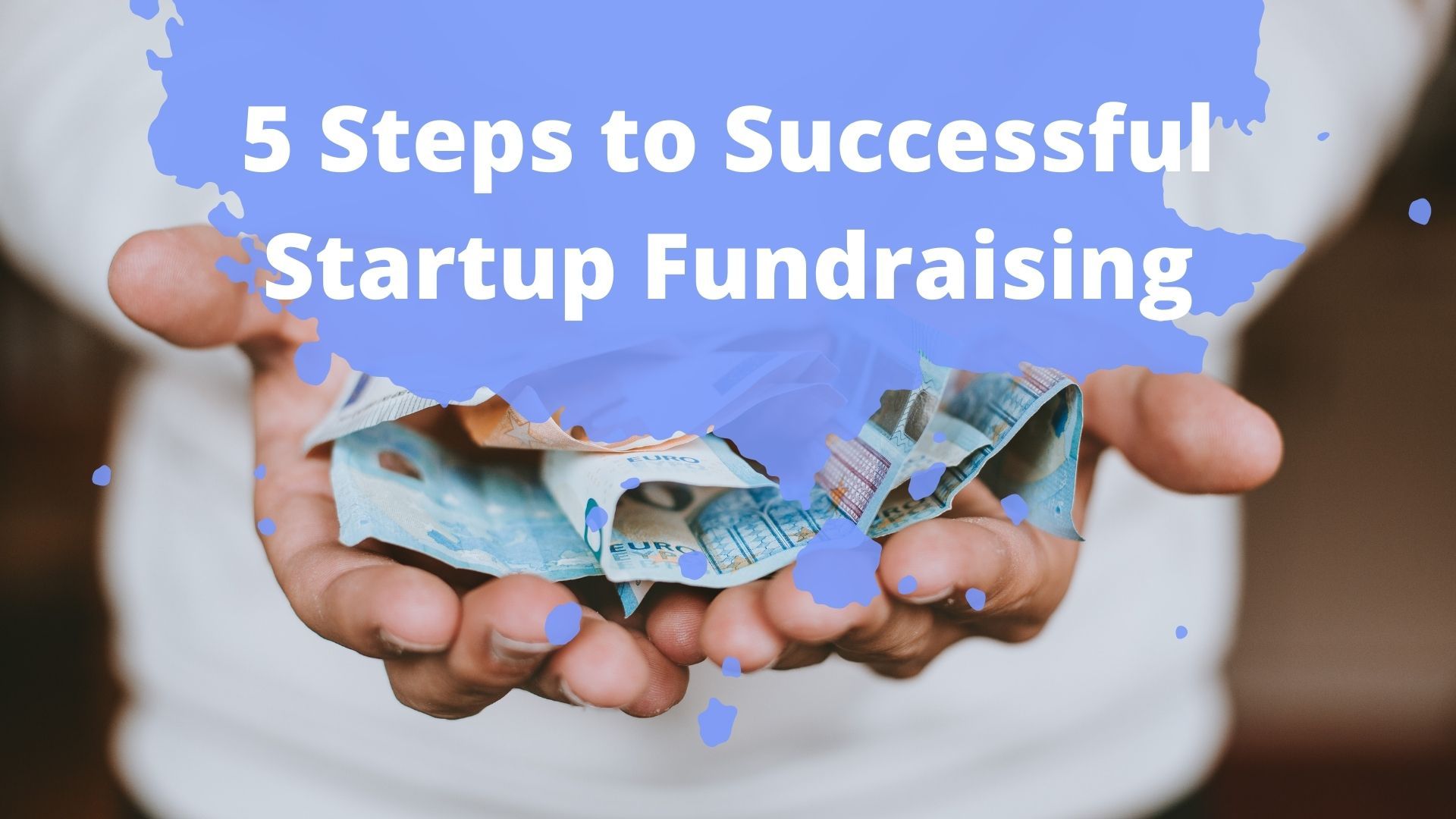One of the biggest frustrations that startup founders experience when fundraising is that they don’t see the results they expect as fast as they would like to.
This is understandable – any time and effort you invest in fundraising is time and effort you don’t invest in developing and selling your product or service. The opportunity cost to fundraising is high.
Because of this, once you start doing it, it’s extremely important to have realistic expectations and a solid plan. If you don’t, you risk wasting your time, which could be fatal for early-stage startups.
So, based on our experience as founders who’ve gone through a successful fundraising process and intermediaries between startups and startup investors, here are the four steps you should take to raise funds for your project successfully.
Step 1: Understand the funding needs of your startup
First, what stage is your startup project in?
Make sure you understand the stage of your project very well because it will determine which investors will be interested in you, and what they’ll expect you to show them.
For example, if you don’t have a product, have you done any form of idea validation? If you haven’t, it’s probably a good idea to bootstrap such efforts before you spend a lot of time fundraising. Without any proof that there is genuine interest in your idea, you’ll have a hard time closing a deal.
- Pre or post-product? Are you fundraising in order to build a prototype and to test it?
- Pre or post-revenue? Do you have financial figures and growth to back your claims? Are you still searching for the right business model?
- Pre or post-product-market fit? Are you still searching for a good fit, or are you feeling a strong pull from the market and looking for capital to fund your exponential growth efforts? If you’re looking for growth capital, make sure you have great proof of PMF.
Second, how much money are you raising, and what are you going to use the money for?
You shouldn’t be fundraising just because that’s what startups do. You need to be exact rather than vague about this, with a specific goal in mind. This way investors would be able to decide if your exact proposition fits their investment profile and preferences.
Keep in mind that the fundraising process can easily take up to six months or more (more on that below). Plan your runway accordingly!
Step 2: Understand the investor landscape and find your most likely investors
Targeting the right customers is crucial for the success of your product. Similarly, you’ll reduce the time and effort needed to raise money if you target the right startup investors.
If the investment profile of the fund you’re talking to doesn’t fit your project (wrong industry, wrong startup stage, etc.), then trying to convince them to invest is almost futile.
In case you’re talking to a startup investor who you know wouldn’t be interested in your project, it’s best to ask them to introduce you to other more likely investors in their network rather than to waste time and effort trying to convince them to change their investment strategy. The productive way to spend your time and effort while fundraising is to network and search for the right people. Trying to convince the wrong people is the easiest way to waste time.
Keep in mind that it’s not a coincidence that most startup funds state clearly on their websites not to cold-call them. Startups are essentially about trust, and getting someone to vouch for your project is the first important step to establish a meaningful connection. Because of this, getting people with experience in the startup landscape involved in your project in one way ot another (e.g. as mentors) can pay dividends in the long run.
Innmind will help you out a great deal in this step – we’ll continuously work on connecting you with your most likely investors. However, our job would be much easier if you have a clear understanding of what your project has to offer to investors. This gets us to the next step:
Step 3: Communicate clearly what makes your business a valuable investment opportunity
Understand that startup investors aren’t looking for an opportunity to help startups. They are looking for an opportunity to make money.
In that sense, fundraising is similar to B2B sales.
Considering you’ve already chosen the most likely investors (as per step 2), what is left is to pitch your startup as clearly and convincingly as possible. You need to understand the “problem” of startup investors: they are looking for the best possible projects that fit their investment profile.
What makes your project stand out from the crowd? The USP of your startup (the things that prove you are a great investment) should be communicated right away. Is it the experience of your team? Is it the traction and growth you are getting? Make sure you know where your comparative strengths lie so that you can use them to make an impression right from the start.
Pitching is just the start of this communication process, however. It serves as an overview of the project. In your follow-up conversations with potential investors, it’s best to tailor your message to the needs of the exact investors. For example, knowing what startups they invested in recently can give you a big advantage in pointing out why your project fits their criteria while standing out in a good way.
Step 4: Prepare for the long haul – build relationships and keep making progress
Even with the first three steps done right, it’s unrealistic to expect to receive funding right away.
In reality, the startup fundraising process takes from three to six months on average. If you have successful startup exits in your CV (and connections with investors in your network) the process could be a lot shorter. If this is your first rodeo, however, six months can even be a low estimate.
“Most people overestimate what they can do in one year and underestimate what they can do in ten years.”
This famous quote from Bill Gates applies to different time frames as well. While you’re not likely to achieve a lot in a month, you’re very likely to exceed your own expectations if you keep on working on finding and grooming investors for six.
The main reason for this is the same reason why VC funds don’t like cold calls. Startup investing is about trust, and trust can’t be built in a day. Successfully closing a funding round entails building a relationship with your (leading) investors. Help them understand your project as well as possible, while at the same time understanding their unique point of view and expectations. Doing this will not only increase the chance of finding investors - it will increase the chance of finding the right ones for your project.
Because of this, making the most out of the time you are fundraising is crucial. Showing tangible progress while talking to investors is one of the most convincing arguments you can have in your favor. It shows investors that the train is leaving with or without them, which is often the final push you need to get them on board.
It makes it a lot easier to convince investors that your startup is a valuable investment if you can lean on hard facts and real progress rather than just on your sales skills. Because of this, all the work you do before you ask for an investment and during the fundraising process compounds and makes it exponentially easier to close a funding round. Make sure to keep pushing the project forward.
Step 5: Get an answer
Most investors don’t like saying no and closing the door for good – they’ll be happy to lead you on.
They do this so that they can piggyback off a lead investor, which gives them social proof and the opportunity to save face in case the project goes bad.
Because of this, make sure you put an expiration date on your offer. Don’t make it too short – as mentioned, you’re unlikely to be able to build the needed fundraising foundation in a month.
However, saying that your fundraising round will end on X date would help you convince the first investor to make the leap of faith.
For example, it’s reasonable to build your foundation and network for 3 months. Once you establish a connection with at least a few potential investors, you can let everybody who you’re talking to know about your progress and about the fact that your funding round ends in one to three more months. Finally, once this period is about to end you can do a final push – share your progress, and try to convince somebody to commit. Of course, this plan needs to be adjusted based on your runway, etc.
If you’re still not successful at that point, it’s safe to assume that you need to work on making your startup a more attractive investment. Once you’ve made changes or achieved milestones on your roadmap while bootstrapping, you can make another push.
Examples: Fundraising Discussion from our VC-backed founders
Some important takeaways from the discussion:
- The fundraising process is longer when fundraising remotely!
- Once you reach out, keep following up on your progress! Follow-up at least three times until you get a clear response.
- It takes much less time when you get warm introductions and when you have traction.
- Fundraising takes at least 1/3 of your total working time. Sometimes it feels like a full-time job!
- Cold emails are very ineffective, so try to use channels like personal introductions and specialized platforms like Innmind.
- Events work well to build a network and find introductions. Online events are also useful and much cheaper!
- Publicity can help you get sales (or fundraising) leads, so have good PR.
- Traction is crucial, as well as improvement and growth from the last time you spoke to the investor.
- Fundraising agents are more often than not cost-inefficient, and usually, investors prefer organic introductions.
- Once successful, keep your investors informed and work on building a good relationship with them.
- No doesn’t always mean no – it could be a conversation starter! Be persistent.
Summary
То sum-up, follow these 5 steps to ensure you don’t get into startup fundraising with the wrong mindset:
- Understand the funding needs of your startup
- Understand the investor landscape and find your most likely investors
- Communicate clearly what makes your business a valuable investment opportunity
- Prepare for the long haul – build relationships and keep making progress
- Get an answer
Read other popular posts in our blog:







